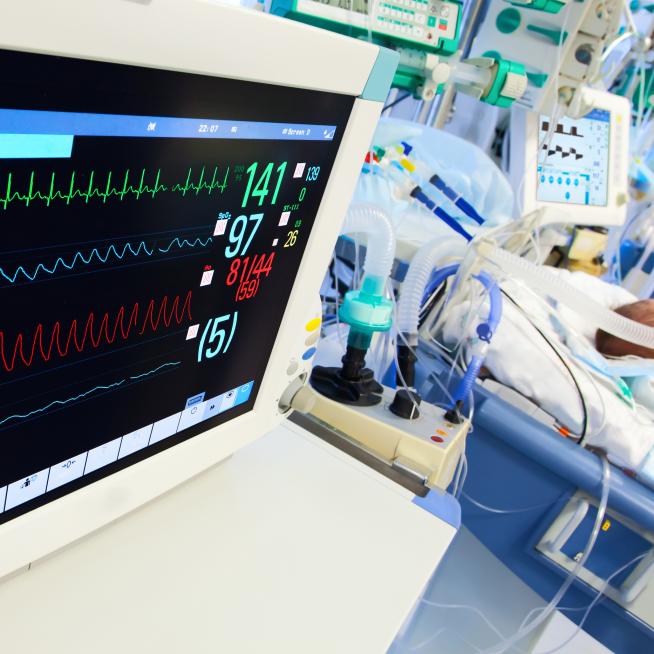Cardiac output–guided haemodynamic therapy in high-risk surgical patients

ARTICLE REVIEW
A growing body of evidence suggests that perioperative goal-directed haemodynamic therapy may have beneficial effects on outcome in high-risk patients [1]. However, this concept has not been consistently implemented into routine care for these patients.
In their recently published article “Effect of a Perioperative, Cardiac Output-Guided Haemodynamic Therapy Algorithm on Outcomes Following Major Gastrointestinal Surgery: A Randomised Clinical Trial and Systematic Review” [2], Pearse et al. present the results of the OPTIMISE trial, a large multicentre study incorporating 774 patients in 17 participating hospitals across the United Kingdom. They investigated the effects of perioperative goal-directed haemodynamic therapy in high-risk patients over the age of 50 undergoing lenghty gastrointestinal surgery.
The authors compared the intervention group receiving stroke volume-guided fluid therapy and inotropic support during surgery and the first six hours postoperatively with a control group treated by usual care at the discretion of the treating anaesthesiologists. The intervention algorithm consisted of consecutive boluses of an unspecified colloid to achieve maximum stroke volume as determined with a haemodynamic monitor based on autocalibrating arterial pulse contour analysis. As an inotropic agent, dopexamine was administered after the first fluid challenge at a fixed infusion rate in all patients allocated to the intervention group and was only adjusted according to alterations in heart rate. A composite of predefined complications and mortality within 30 days postoperatively served as the primary endpoint, in addition to various secondary endpoints.
For the OPTIMISE trial, the investigators found a marked and clinically relevant, though statistically non-significant decrease in the primary outcome in the intervention group as compared with the usual care group. In line with these findings, there were no statistically significant differences between groups regarding any of the secondary outcome parameters.
The authors also included findings from an updated systematic meta-analysis they conducted on results from 38 trials published since 1966 as well as their own findings. The meta-analysis showed that there is evidence in favor of goal-directed haemodynamic therapy in terms of a clinically relevant and statistically significant reduction in postoperative complications. As with the OPTIMISE trial, there is a non-significant, but marked decrease in mortality at different postoperative time points.
“…the results of the OPTIMISE-trial in conjunction with the more conclusive results from the accompanying meta-analysis presented in this paper strongly suggest that there is a benefit from goal-directed haemodynamic therapy in the perioperative management of high-risk surgical patients.”
As its’ investigators clearly noted, the OPTIMISE trial protocol was conceived as a downright pragmatic approach to perioperative goal-directed haemodynamic therapy. Although it allowed a protocol adherence rate of more than 90%, this pragmatic approach neither specified the type of colloid fluid nor required cardiac output-guidance for inotropic therapy. Additionally, the authors do not share detailed intervention-related data such as the types of administered fluids, actual values of stroke volume or cardiac output. Further, the fact that the marked decrease in the primary endpoint in the intervention group failed to reach statistical significance might be attributable to a lack of statistical power due to a lower than expected baseline incidence of the composite primary endpoint and a lower intervention effect size.
It should be noted that eliminating the first 10 patients treated in each centre, in practice removing the effect of the learning curve, the results become statistically significant.
To conclude, the results of the OPTIMISE-trial in conjunction with the more conclusive results from the accompanying meta-analysis presented in this paper strongly suggest that there is a benefit from goal-directed haemodynamic therapy in the perioperative management of high-risk surgical patients.
This article review has been prepared and submitted by Bernd Saugel of ESICM’s Cardiovascular Dynamics Section.
References
1. Grocott MP, Dushianthan A, Hamilton MA, Mythen MG, Harrison D, Rowan K, Optimisation Systematic Review Steering Group. Perioperative increase in global blood flow to explicit defined goals and outcomes after surgery: a Cochrane Systematic Review. British Journal of Anaesthesia, 2013 Oct;111(4):535-48.
2. Pearse RM, Harrison DA, MacDonald N, Gillies MA, Blunt M, Ackland G, Grocott MP, Ahern A, Griggs K, Scott R, Hinds C, Rowan K, OPTIMISE Study Group. Effect of a perioperative, cardiac output-guided haemodynamic therapy algorithm on outcomes following major gastrointestinal surgery: a randomised clinical trial and systematic review. JAMA, 2014;311(21):2181-2190.